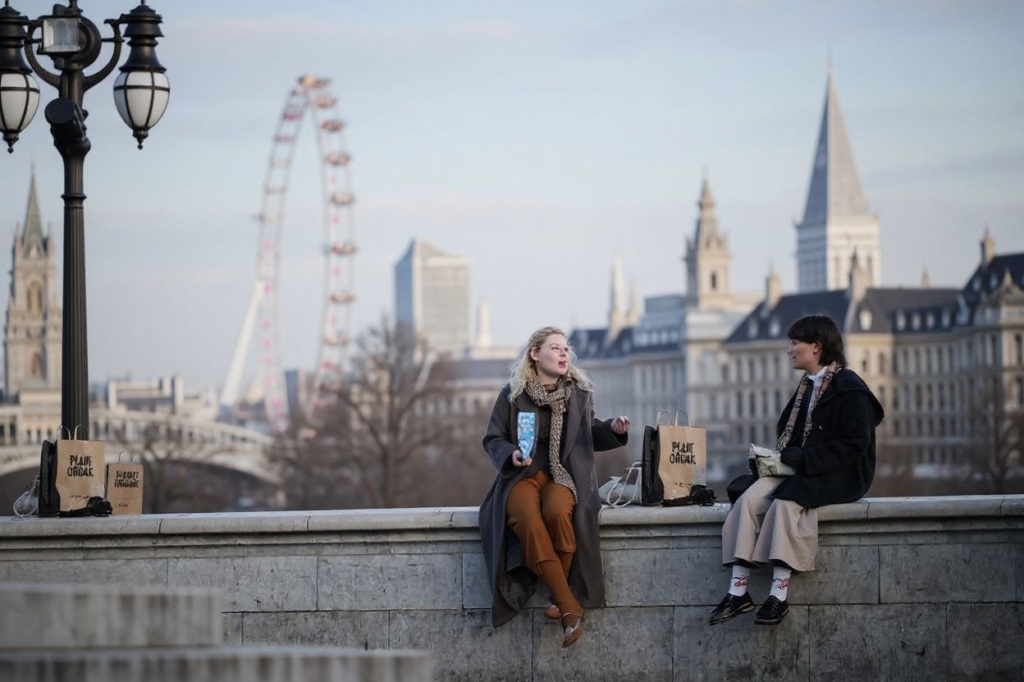
When you think about the most diverse cities in the world, familiar names might come to mind. You’d expect to find big names like New York and London on the list, and you’d be right.
Big cities like those are often melting pots of cultures. You can’t walk down one street without seeing multilingual signs, hearing a variety of languages, or bumping into people of different races and ethnicities.
This chaos of personalities creates a city that can be both vibrant and electrifying.
For students, choosing a university also means choosing the city they’ll spend most of their time in. It’s one thing to be part of an international student body within your school grounds but another to be part of a much wider community.
So whether it’s a bustling metropolitan that never sleeps or a quiet backwater town, where you study affects your entire school experience.
There are advantages and disadvantages of studying in some of the most diverse cities in the world, but before we give you the list, here’s why you shouldn’t ignore the smaller, less diverse towns.

Just because you're in a small city doesn't mean you'll miss out on too much.
Small city, big personality
You’ve seen the movies, and you know the drill: small cities, while often less diverse, are full of their own charm.
But life in the big city isn’t for everyone. It can be overwhelming, especially if you’re unused to the sheer amount of activity that happens every day.
Beyond that, bigger cities have their share of issues too, especially concerning living expenses.
- Higher rent. If you’re in the US, different states have different property taxes – New Jersey’s is the highest of all at 2.23% in 2024, while Hawaii is the lowest at 0.32%.
- Higher cost of groceries. While not always the case, grocery shopping in bigger cities can be more expensive. A report shows the total cost to shop for essential items in London is 22.50 pounds and only 18.12 pounds in Birmingham.
- Higher social spend. To socialise, you need more. So your coffee runs, brunches, and nights out for drinks will usually cost even more in big cities where prices generally lean on the higher side. In Sydney, a pint of beer is coming up to 20 Australian dollars.
So, while you can get an excellent range of goods, services, and experiences from a bigger, more diverse city, a smaller city has perks.
For one thing, smaller towns usually have a tight-knit community where “everyone knows everyone.” Here, they have the advantage of being more nimble and responsive to crises and challenges than cities.
There’s a feeling like you’re a part of a wider community outside your university. From joining community-led events to having more personalised interactions with people, it all adds to the experience.
 Finding your community is easier when you’re in one of the most diverse cities in the world. .
Finding your community is easier when you’re in one of the most diverse cities in the world. .
What happens when you study in the most diverse cities in the world
Just like smaller towns, living and learning in one of the most diverse cities has it persks — especially if you’re the kind who constantly needs new insights and experiences, and want them fed to you instead of you seeking them out.
It’s why lists like QS Best Student Cities exist, compiling everything that makes a city great for students to live and learn.
Being on a global campus or city that attracts a sizeable multinational crowd allows for your personal and professional development.
Places like London and Melbourne are hubs for international students to convene and search for opportunities – the cities are full of global offerings, from food to multinational companies. According to the Complete University Guide, the University College of London (UCL) has the largest international student body at 52.6%. In Melbourne, RMIT University reported over 26 thousand international students in 2022.
Big cities are frequent hosts of large-scale events too.
From the Olympics to Oktoberfest, music festivals to national parades, being in one of the most diverse cities in the world makes the whole living abroad experience that much cooler.
And while some universities aren’t located in cities with as much diversity, they offer year-abroad opportunities to give students a taste of what a different location is like. Otherwise, trips to nearby towns are always a go-to weekend plan for many students abroad.
 London has been named QS Best Student City 2024, and it’s the fifth time the city has placed first. .
London has been named QS Best Student City 2024, and it’s the fifth time the city has placed first. .
10 most diverse cities in the world to study abroad in
1. London, England
Between top-tier higher education institutions and programmes and proximity to multinational companies, it’s little surprise that London ranked first in the QS Best Student Cities 2024 list. As a central hub that opens the doors to Europe, it pulls in more than just students too.
In 2021-2022, of the 679,970 international students studying at UK higher education institutions, 179,425 were studying in a university or college in London. China, India, and Nigeria are the top three most popular countries from which international students come.
2. Dublin, Ireland
The capital of Ireland is known for being a student-friendly city. Trinity College Dublin, the University of Dublin, and the Royal College of Surgeons in Ireland are mainstay higher education institutions on the scene and ones that international students flock to.
International students make up 13.7% of Ireland’s student population, with more than 19,000 choosing to study in the country. The US, China, and India are the most common countries of origin.

Not only in the US – New York City is one of the most diverse cities in the world.
3. New York City, US
The concrete jungle where dreams are made of, New York City is more than just towering skyscrapers and a glitzy representation of the American Dream.
Aside from being the only state in the US with multiple Ivy League schools – Cornell University and Columbia University –, it’s also where students join a multitude of nationalities in the pursuit of higher education.
In 2022-23, New York had 126,782 international students in the state.
In the city, New York University hosted over 21,000 international learners from more than 140 countries in 2021-2022, making it home to the most international students of any university in the country.

Toronto is the largest city in Canada and is home to 3 million residents, of which half are immigrants.
4. Toronto, Canada
“Diversity Our Strength” is the motto of the city of Toronto, which draws international students to find a place within its universities. It’s Canada’s best student city, ranking #11 on the QS Best Student Cities 2024 list.
In 2022-23, of the 807,620 study permit holders with a valid permit in Canada, more than 105,000 international students were studying at the universities located within Ontario. Canada generally sees the most students from India, China, and the Philippines.
5. Amsterdam, The Netherlands
With its scenic landscapes and progressive social policies, the Netherlands is a place anyone can enjoy. The country offers a post-study work visa, also called “orientation year”, which is a residence permit that lasts one year, allowing international students to find jobs in the Netherlands or start a business of their own (and with 80% success).
In 2022, the Netherlands had more than 122,300 international students. The University of Amsterdam has the highest number of international students, at just almost 13,800. In general, most non-local undergraduate students came from Germany, and others included Romania, Bulgaria, Poland, and Hungary.
 International students graduating from a German university can look forward to initiatives that help them secure jobs in the country from 2024 to 2028. .
International students graduating from a German university can look forward to initiatives that help them secure jobs in the country from 2024 to 2028. .
6. Berlin, Germany
A country that offers tuition-free education for everyone, Germany is an attractive place to pursue an affordable yet quality education. Scholarships for international students are widely available too, creating even more reasons to study here.
In 2022-23, it was reported that the country had 458,210 international students, with Berlin universities housing more than 27,000 of them. Most of the students come from China, India, and Syria.
7. São Paulo, Brazil
The largest higher education market in Latin America, Brazil has its fair share of top-ranked universities. Situated in the heart of the financial and cultural hub is the University of São Paulo, the country’s biggest public university and one of the best in the region.
While São Paulo’s student population mainly consists of Brazilians – 3% of enrolled students in the city’s universities are international – the city itself hosts people from all over the world, including Americans, Portuguese, Italians, and those of Latin American countries like Paraguay, Colombia, and Argentina.
8. Melbourne, Australia
Australia’s best student city according to QS Best Student Cities 2024, making it the ninth time it has won the title. Melbourne was noted to be the friendliest city in the world too, so you’ll know that you’re in good hands.
Each year, Melbourne sees more than 170,000 international students from over 170 countries pursue their higher education on their shores. The top five countries where students come from are China, India, Nepal, Colombia, and the Philippines.
9. Singapore
One of the world’s most expensive and safest cities (according to The Economist’s Safe City Index), Singapore is small but mighty. The country’s education system has been consistently ranked as one of the best in the world by the Organisation for Economic Co-operation and Development, so it’s no wonder that students find their way to the city-state.
In 2023, QS World University Rankings reported that combined, the National University of Singapore, Nanyang Technological University, and Singapore Management University had more than 17,000 international students. Other autonomous universities do not have the numbers available publicly.
10. Hong Kong
Known as Asia’s World City, Hong Kong is a city that welcomes all to its world-class institutions. Three of the 22 local degree-awarding institutions were ranked within the top 50 by the QS World University Rankings, and another two were within the top 200.
Data from the University Grants Committee showed that in 2022-23, Hong Kong had 21,709 non-local student enrolments. Most of the city’s international students hail from the neighbouring country of China.








